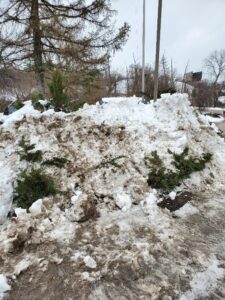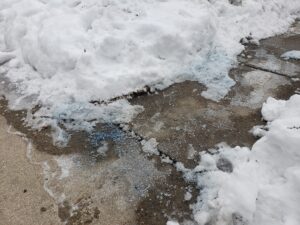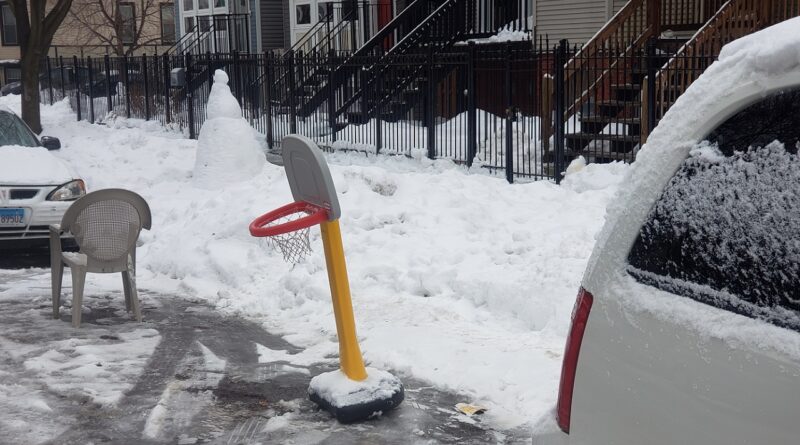How to Avoid a Winter of Discontent
Podcast: Play in new window | Download (Duration: 2:02:56 — 57.8MB)
Subscribe: Apple Podcasts | Spotify | Android | iHeartRadio | Podchaser | Email | TuneIn | RSS | More
(February 7, 2021) It hasn’t been much of a winter in the Midwest. At least around Chicago. Until now. Surprise! When you least expect it, here comes the snow and the brutal cold. If even a small part of your life involves caring for your trees and a sidewalk or a driveway, this show is for you. Our goal is to help you figure out how to avoid a winter of discontent…to coin a phrase. Here we go.
The return of Skeet
Those of you who are regular viewers/listeners know that M.D. Skeet, known simply as “Skeet,” is one of our go-to tree care folks. He’s an ISA (International Society of Arboriculture) certified arborist with Bartlett Tree Experts, our major sponsor. Today he stops by to teach you how to avoid winter tree problems, which can lead to summer tree problems.

Actually, winter is a great time for tree care, for several reasons. It is easier to inspect for structural problems in deciduous trees that have dropped their leaves. That also makes it easier to prune trees. Additionally, frozen ground puts surrounding gardens at less risk to tree care equipment. Also, some trees, like ashes and oaks, should be pruned only during the dormant season.
Predictably, winter also poses problems for trees. There’s the obvious damage caused by the weight of ice and snow on branches. Homeowners unwittingly hurt plants by overusing salt products. (More on that below.) But the freeze and thaw cycles can also wreak havoc.
As temperatures fluctuate, trees and shrubs can be damaged by freezing and thawing when there are very cold nights followed by warmer sunny days. Most materials shrink as they get colder and expand as they warm. The same is true for soil and for the bark of trees. This is what leads to two common cold-related injuries: frost heaving and winter bark cracking (splitting).
The kind of weather we’ve experienced in the past week makes things more difficult for arborists, too. I chatted with Skeet, who told me that he’s been supervising three crews. With sub-zero weather on the way, they’re turning to heated vests and gloves, which is something that hadn’t occurred to me might be useful. Of course, I’m not usually out there working on trees in the middle of winter.
How to avoid tree and shrub damage due to plowing? That can be as difficult as minimizing salt damage. Sometimes it’s not your fault, though your plants suffer the consequences.
As always, we’ll try to answer questions that come in from our social media viewers. Drop us a line!
How to avoid winter salt damage
If you live in an area with winter snow and ice and you run out to buy the cheapest deicer, you’re causing problems. University of Illinois Extension explains that sodium chloride, or “rock salt,” is most typically used on sidewalks and streets. It can end up as runoff in meltwater or on the branches of your trees and shrubs as aerosol sprays dispersed by fast moving vehicles and wind.
A less common, but often more serous plant aliment can occur if salt-laden meltwater infiltrates the soil profile. In these cases, soil very near a source of salt, such heavily treated sidewalk or similar surface, accumulates sodium, Pankau says. The impact is often very concentrated as meltwater tends to have well defined drainage ways.
“As sodium accumulates in the soil profile, it can have dramatic effects on soil properties over time,” Pankau says. “From raising pH to destruction of soil structure that ultimately results in additional soil compaction, this damage is often more serous due to wide ranging effects on plants and because it is very difficult, or sometimes impossible, to remediate.”
At times, it can create soil conditions unsuitable for root growth, but can also be detrimental to beneficial soil biota, such as mycorrhizae. In addition, salts in soils actually absorb soil water that would otherwise be available to the plants.
One of the ways to control salt damage to soil and vegetation is to cut back on its use. While that seems like a “duh” statement, many Americans have been brainwashed into thinking, “if some is good, more is better.” As in the case of fertilizers and pesticides, that can be a tragic miscalculation.
Groundwater contamination
More than average homeowners, municipalities are in the forefront of cutting back on salt. Two years ago, Peggy and I talked to Fred Braun, Director of Public Works for the Village of Niles, Illinois. They had recently received a national American Public Works Association (APWA) Excellence in Snow and Ice Control Award. Their their APWA Award application noted how toxic salt can be and their efforts to limit its use. In the end, they have decreased salt usage by 40%.
Municipalities in places like New Jersey, Wisconsin and New York State have noted how salt can contaminate ground water and wells. Here’s a fun fact.
- One teaspoon of chloride salt corrupts 5 gallons of water. One 50-pound bag of ice melt ruins 10,000 gallons of freshwater.
Let that sink into the groundwater in your brain for a minute. There are alternatives to sodium chloride, but they tend to be more expensive than plain old salt. Well, yeah, what do you expect? Perhaps it’s time to get past the notion that protecting our environment should not cost a penny.

Which brings us to animals and pets. A product called PlaySafe Ice Blocker says this about the various pet products that are out on the market.
Pellets pose two risks to our pets. First, they can be toxic when ingested, and they dry out and irritate paws. For example, Calcium Chloride (the only ingredient in Scott’s pet safe Ice Melt) is a great ice melt because it heats to 120°F when it comes into contact with moisture from the ice, snow, or your pets mouth
Paw Thaw claims to be safe and is sold in pet stores. But, according to their MSDS sheets, it is simply 95% Rock Salt. Paw Thaw does not list their ingredients on the label, but they do flag that CMA is included for safety (technical documents reveal that amount to be no more than 5% of the blend) FYI, coloring rock salt green does not make it safer.
PlaySafe also notes that the deicer industry is basically unregulated. Manufacturers are not required to list ingredients, even when safety claims are made. Its product is basically a “pre-icer.” That is to say, it’s a liquid that prevents ice from forming at all. The ingredients are Calcium Magnesium Acetate, Potassium Acetate, and water. They state that “These ingredients are totally safe for your pet’s paws, their tummies and our planet.”
In full disclosure, this is not an endorsement of PlaySafe. I got pitched to do an interview and I was intrigued. I also know how toxic salt products are. So, today, we chat with Mitch Vestal, president of PlaySafe. Should be interesting.


